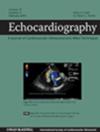Association Between Cholesterol Remnants and Cardiac Structure and Function: The Copenhagen City Heart Study
Abstract
Aims
A causal relationship between ischemic heart disease and cholesterol remnants (CR) has been suggested by genetic studies. We studied whether CR are associated with alterations in cardiac structure and function, as evaluated by sensitive echocardiographic measures in individuals without known heart disease.
Methods
All participants from the 5th Copenhagen City Heart Study without known heart disease underwent a comprehensive echocardiography including two-dimensional speckle tracking analysis. CR levels were calculated from lipid analyses in non-fasting venous blood samples.
Results
The study included 3792 participants. Mean age was 55 years and 42% were male. In multivariable analyses adjusted for age, sex, body mass index, hypertension, diabetes and smoking status, increasing levels of CR were significantly associated with alterations in cardiac function, demonstrated as decreasing left ventricular ejection fraction (stand. β-coef. = −0.060, p = 0.001), a decreasing global longitudinal strain (stand. β-coef. = −0.045, p = 0.014), and a decreasing E/A ratio (stand. β-coef. = −0.110, p < 0.001). This association was significantly stronger than the association with cardiac alterations and LDL levels. Additionally, increasing levels of CR were associated with alterations in cardiac structure in the univariable analysis, but these associations were attenuated after multivariable adjustment.
Conclusion
In a general population sample without known heart disease both impaired systolic and diastolic function were present with increasing levels of CR. This association was stronger than the association between cardiac alterations and LDL-cholesterol levels. The findings support the need for additional research in the potential effect of CR on cardiac health.
Summary
- This study investigates the association between cholesterol remnants and cardiac structure and function in 3792 individuals without known heart disease.
- Utilizing sensitive echocardiographic measures, we observed a significant association between increasing cholesterol remnant levels and compromised cardiac function, including reduced left ventricular ejection fraction, global longitudinal strain, and E/A ratio.
- This association surpassed that of LDL levels. In contrast, cholesterol remnants exhibited an association with cardiac structure only in univariable analysis.
- The findings support the need for further research into the potential long-term effects of and interventions focused on remnant cholesterol in healthy individuals.

 求助内容:
求助内容: 应助结果提醒方式:
应助结果提醒方式:


